Master Caftsmen Of Design: Meet Five Local Artisans with Old World-skills

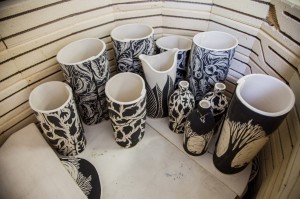 When it comes to making a house a home, it often comes down to the details—those handmade pieces and custom accessories that add a sense of personality and thoughtful care to a space. The age-old practice of making home goods—whether it’s furniture, sculpture, glass or the like—is still very much alive and well among us thanks to a community teeming with artisans right here in Central Virginia. Men and women throughout the region are serving the maker’s lifestyle proudly, putting their classically based creativity to good use with modern techniques and tools that reflect and build upon an Old-World era of expertise.
When it comes to making a house a home, it often comes down to the details—those handmade pieces and custom accessories that add a sense of personality and thoughtful care to a space. The age-old practice of making home goods—whether it’s furniture, sculpture, glass or the like—is still very much alive and well among us thanks to a community teeming with artisans right here in Central Virginia. Men and women throughout the region are serving the maker’s lifestyle proudly, putting their classically based creativity to good use with modern techniques and tools that reflect and build upon an Old-World era of expertise.
Wonders in Wood
For wood carver Mark Poleski, being an artisan is truly a full-time job, born from a lifelong love for art of all mediums.
“Early on, I constantly would draw to hone my skills,” says Poleski. “I always wanted to work in 3D, to sculpt in stone or wood.”
Happily, this artisan made his wishes come true, and he now works at the helm of his own wood-carving studio, Sleepy Hollow Art. Drawing on his 20 years of experience as a residential contractor, Poleski offers homeowners custom wood and rockwork, including eagle sculptures, wooden three-dimensional marine portraits, carved pumpkins and—what seems to be his signature motif—wood bear sculptures of all shapes and sizes.
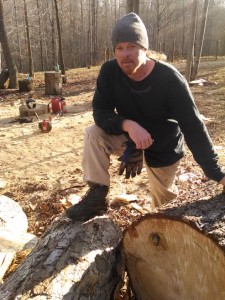 “One day I saw a small chainsaw-carved bear in an antiques store and told myself I should try to carve one. About a year later, I did—and I never stopped.”
“One day I saw a small chainsaw-carved bear in an antiques store and told myself I should try to carve one. About a year later, I did—and I never stopped.”
Poleski’s art officially took off thanks to a serendipitous project he made for his sister—a large, hand-carved bear that ended up just outside of her Amherst County lawn and garden store. Once customers caught on to the piece, it became something of a small-town sensation and garnered enough interest to give Poleski’s burgeoning business the boost it needed.
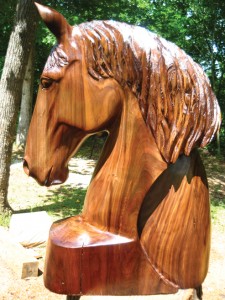 “I started to make other animals, and my wife Dana and I decided to officially form our creative venture, Sleepy Hollow Art. We attended the Garlic Festival in Amherst later that year, and started to become better known locally and online,” he explains.
“I started to make other animals, and my wife Dana and I decided to officially form our creative venture, Sleepy Hollow Art. We attended the Garlic Festival in Amherst later that year, and started to become better known locally and online,” he explains.
These days, you’ll find Poleski in his studio crafting wood sculptures for clients across the country. He’s mastered refined and rustic styles, not to mention nearly everything else in between. The proof is in his extensive portfolio of work.
“When I first started carving it was challenging to create a bear,” he reminisces. “I felt like I was almost forcing it to take shape. The progression from ‘learning’ to ‘immersion’ has been that now I can better visualize the process and end result. I begin to enjoy the process. It is not forced anymore. It flows. I feel connected to something that helps me see it more easily.”
As with any artisanal adventure, the Poleskis must constantly work to bring awareness to the craft. The technological advancement of our age makes this type of marketing much easier, perhaps, than it did for Poleski’s classic predecessors, but the same principles are still in play—to make and create something timeless and unique, and to share the work with others through word of mouth.
“To me, being an artisan means being able to do what I love all the time. I think a lot about each sculpture, about how to approach it or how to construct a large, complicated piece,” says Poleski. “I feel lucky to be able to do something like this where I can stay in my creative mindset, while at the same time, share my work with others. It gives me a sense of self-worth.”
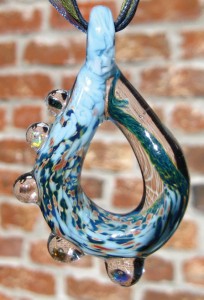 Unique Glass-Blowing Techniques
Unique Glass-Blowing Techniques
Jonathan Baker, a professional glass blower living in Lynchburg, got his own start as a modern-day artisan while attending classes at Elon University. While there, he learned the traditional art of glassblowing, specifically having the opportunity to hone his relationship with a vat of molten glass and the process of turning the raw material into something beautiful.
Later, Baker took his skills to the next level, learning about lampworking, which involves the use of a torch or lamp to melt the glass and, specifically, is the form of glass blowing that Baker does now. From there, he took a brief introductory course in Durham, and then embarked on the final leg of his journey—teaching himself the rest of the basics, while adding his own unique touch throughout the process.
“My progression has been from making small, simple items, to now being able to incorporate various, more complicated techniques into larger sculpture pieces,” Baker explains. “It really evolved over time and after continual practice, I’m able to know how the melted glass moves and flows and how to incorporate various colors to achieve a better understanding of how the final piece will come out.”
As if that weren’t enough, Baker also runs 5th Street Art House, a co-op space in downtown Lynchburg that plays host to the work of innumerable artists from across the region. Walk through the doors, and you’re immediately met with a web of color and texture. From handmade furniture and oversized prints, to paintings and textile art, 5th Street Art House showcases it all and acts as visual proof that Baker isn’t alone in his passion for all things “handmade.”
The shop on 5th Street also serves as Baker’s studio, where he creates his glass projects. As far as he knows, he says, it’s the only lampworking glass studio in Central Virginia, and visitors are always welcome to watch him work.
As a businessman and artisan, Baker is forever thinking, analyzing and dreaming of new ways to approach his work and to expand on his technique, so that “stagnant” never becomes a part of his routine.
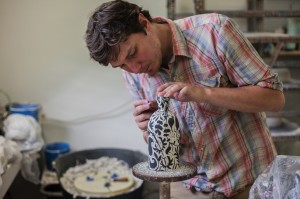 Clay Creations
Clay Creations
Another artisan who is anything but stagnant (as well as a nearby 5th Street neighbor) is Justin Rice. Rice has made quite a name for himself as one part of the three-person team at downtown Lynchburg’s Oxide Pottery. His pieces are instantly recognizable to those who see them, thanks to his telltale comic book-inspired graphic art and clay printing techniques.
It all started while attending the Cleveland Institute of Art, where Rice studied as a drawing major with a concentration in printmaking. “The degree, at the time, required that each student take a class in every field or discipline,” Rice recalls. “I waited until my BFA thesis year to put my hands in clay. I was bitten by the ‘clay bug’ and took to the potter’s wheel.”
The rest, as they say, was history. After moving to Richmond, Rice teamed up with Chatham Monk and her father, Joe, and Chatham and Justin eventually converted their garage into a ceramics studio. Armed with a collection of used equipment—and by sacrificing most nights and weekends to their art—the team, in Rice’s words, found their way with clay.
Eventually, the trio made the transition to Lynchburg and opened up shop—literally—in the fall of 2009 in a space on Main Street that Joe Monk had been renovating in fits and spurts for years.
“With a lot of hard work, the day jobs gave way to a full-time studio practice, and Oxide Pottery came to life. I now have my hands in clay eight days a week,” Rice jokes.
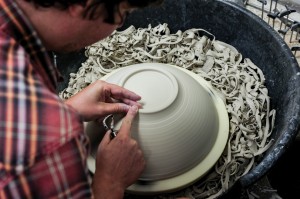 Between downtown foot traffic and their involvement in the museum and gallery wholesale market, Rice along with Chatham and Joe Monk have successfully “made it” in terms of building their following. Visitors to the shop on Main Street are met with a wide variety of fired clay pieces, from mugs and dishes, to heirloom-worthy platters and vases. This includes Rice’s signature printed clay pieces, too, many of which are meant to serve just as they are—decorative works of art to be hung, admired and treasured.
Between downtown foot traffic and their involvement in the museum and gallery wholesale market, Rice along with Chatham and Joe Monk have successfully “made it” in terms of building their following. Visitors to the shop on Main Street are met with a wide variety of fired clay pieces, from mugs and dishes, to heirloom-worthy platters and vases. This includes Rice’s signature printed clay pieces, too, many of which are meant to serve just as they are—decorative works of art to be hung, admired and treasured.
“My personal inspirations can be found all over the map,” he reflects. “Certainly the natural world can be seen as a huge inspiration, although I think it is filtered through my interest in comic books, movies and music. These inspirations become translated into shapes and graphics that work on a narrative level.”
Just as you’ll hear from many artisans on similar professional path, Rice considers his role as a modern potter a lifestyle rather than a traditional job. “I consider myself a ‘Maker’ and it makes me feel good to create, using my mind and hands to leave behind physical records of ideas. Yes, at the end of the day I wash my hands and leave the clay studio, but when I get home I work in my sketchbook and think and work on other projects with other materials. It is a never-ending cycle and you just have to ride it and capitalize on opportunities when they arise.”
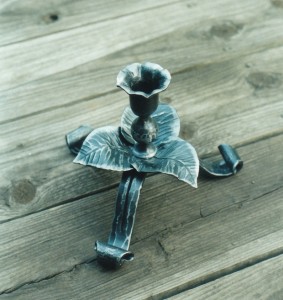 Modern-Day Blacksmithing
Modern-Day Blacksmithing
Despite the fact that present-day artisans are proven aplenty within the region, it may still come as a surprise to know that the near-ancient art of blacksmithing is flourishing in our midst. One man responsible for affirming its presence in the area is Story and Forge owner and professional blacksmith David Tucciarone.
Tucciarone got his start in the art in the early 1980s, as part of a shipyard apprentice program based in Norfolk. While operating there, he learned the steel fitter trade in tandem with his training at a shipyard blacksmith shop. After layoffs forced him away from the shipyard, Tucciarone came up with a new plan.
“Being a collector of old tools I reasoned that if I had some blacksmithing skills, I could repair the various tools I had collected,” he explains. “During this time, a very bad strain of flu hit the town where I lived, and I was laid up for about a week with the illness. It was during this sick time that I finalized my plans.”
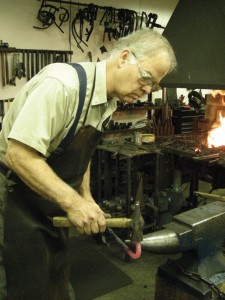 With his process laid out thanks to the opportune illness, Tucciarone “forged ahead” and ended up at John C. Campbell Folk School for his first blacksmithing class in 1986. Next came a series of blacksmithing group memberships and more classes, all culminating in a trade well learned and fully appreciated.
With his process laid out thanks to the opportune illness, Tucciarone “forged ahead” and ended up at John C. Campbell Folk School for his first blacksmithing class in 1986. Next came a series of blacksmithing group memberships and more classes, all culminating in a trade well learned and fully appreciated.
“Since my days in the shipyard, I have discovered a kind of ‘inner artist’ inside of me. I experience a great deal of satisfaction as I take raw steel and forge it into useful art,” he reflects. “As the ideas are formed, I put a little bit of myself into the work.”
Since the early 1990s, that “work” includes a series of orders from clients who come to him with their own visions of custom ironwork for both the inside and outside of their homes—anything from fireplace tools and stands and garden trellises, to sculptural wall art, curtain draw backs and metal candelabras.
“Working for myself is very fulfilling. I try to keep standard hours for the sake of my clients, but oftentimes I am working late at night, as well as on Saturdays and Sundays.”
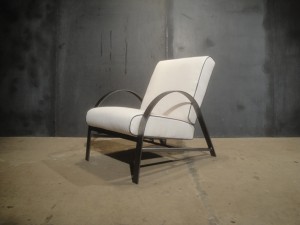 Custom-Built Furniture
Custom-Built Furniture
Thomas Filiaggi, the builder and designer behind vintage and custom furniture studio Loft3F, is another modern artisan who blurs the lines between his work and his free time. Following graduation from Virginia Tech in 2006, Filiaggi made the transition to Lynchburg, where he found work within Georgia-Pacific’s IT department. Faced with the prospect of filling his new home, a loft in Riverviews Artspace, Filiaggi found himself wandering through downtown furniture shops in search of pieces to fill the empty square footage.
“I bought a lot of vintage furniture pieces, many of which needed some work. I did a lot of refinishing and repurposing, and since I was a website developer, I thought, ‘Why not create a webpage and start selling some of this stuff?’” Filiaggi explains.
Thanks to the growing demand for mid-century modern furniture, and pieces that fit within the on-trend industrial look, Filiaggi’s website and brand took off, eventually giving way to custom-made tables, chairs, nightstands, buffets, cabinets and more built out of wood and steel. Those sold, too, and so Loft3F was formally established as a business.
“I was working out of an old church on Cabell Street that my father and I bought (and are still in the process of restoring), and that became really cramped, so I rented some shop space on Kemper Street, quit my IT job and went for it,” he says.
Filiaggi explains that he took on the lifestyle of an “artisan” rather organically, what with no formal training in the process of furniture building. “I was an IT guy, and so the only thing I did with my hands was peck at a keyboard. Restoring the church and refinishing furniture was just something to do to escape from the mundaneness of the corporate world. Once I started creating things though, I knew that was what I wanted to do full-time,” he says.
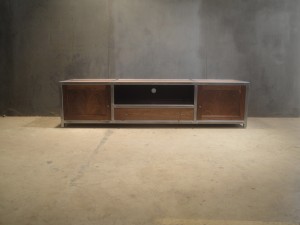 Today, Filiaggi’s business is more than a full-time job, offering him both a way of life and a way to share his creative talent with eager clients and Loft3F supporters.
Today, Filiaggi’s business is more than a full-time job, offering him both a way of life and a way to share his creative talent with eager clients and Loft3F supporters.
“Enjoying what you do everyday is what it’s all about. To get that email from a customer saying how much they love their 10-foot dining table years after it has been delivered…that’s one of the greatest feelings in the world.”
Whether by quill or by keyboard, there’s little doubt that artisans both past and present know exactly how he feels.
5th Street Art House, Artisans, Blacksmithing, Clay Creations, Custom Iron Work, Custom-Built Furniture, Glass-Blowing, Handmade Furniture, Old Tools, Sculpting, Sleepy Hollow Art






